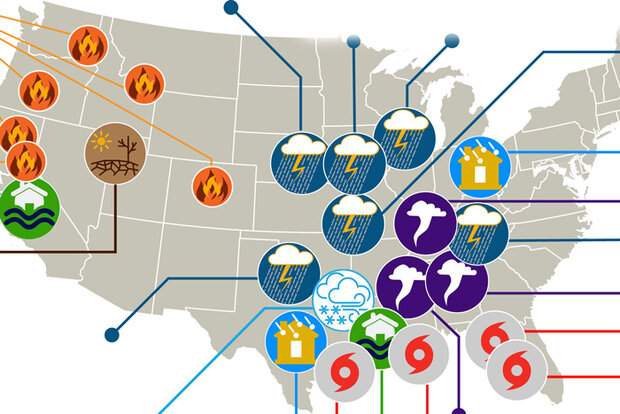Blogs
La Niña is likely to hang around through the spring, with a transition to neutral favored for the May–July period. Hop in, and we’ll cruise through some updates on current conditions and the recent past!
On the road again
The November–January average Oceanic Niño Index, that is, the three-month-average sea surface temperature anomaly in the Niño-3.4 region of the tropical Pacific, was -1.0 °C. Anomaly means the difference from the long-term average; long-term is currently 1991–2020. This marks our fifth three-month period in a row with an Oceanic Niño Index that exceeds the La Niña threshold of -0.5 °C. Passing this mile marker means this La Niña has persisted long enough to be awarded…
Read article
This is a guest blog by Tim Woollings , a professor of climate science in the Department of Physics at the University of Oxford in the UK. Tim recently won the Louis J. Battan Award from the American Meteorological Society for his book “ Jet Stream : A Journey Through our Changing Climate.”
The term jet stream is used increasingly in both weather forecasts and news reports of extreme events, from cold spells and flooding to heatwaves and droughts. But what is the jet stream, and why do we care about it so much?
The jet stream is a fast, narrow current of air flowing from west to east that encircles the globe (not to be confused with the Gulf Stream which is instead an ocean c…
Read article
Last week, our team at NOAA National Centers for Environmental Information (NCEI) released the final update to its 2021 Billion-dollar disaster report (www.ncdc.noaa.gov/billions), confirming what much of the nation experienced throughout 2021: another year of frequent and costly extremes. The year came in second to 2020 in terms of number of disasters (20 versus 22) and third in total costs (behind 2017 and 2005), with a price tag of $145 billion.
2021 Highlights
In 2021, the U.S. experienced 20 separate billion-dollar weather and climate disasters, putting 2021 in second place for the most disasters in a calendar year, behind the record 22 separate billion-dollar events in 2020. &nbs…
Read article
Happy new year! This La Niña event is likely near peak strength as we start 2022. Related impacts to global weather and climate will continue through the rest of winter and into the spring, however, because climate impacts lag tropical Pacific sea surface temperature changes. Forecasters favor a transition to neutral in the April–June period.
Chutes and Ladders
The sea surface temperature in the Niño-3.4 region of the tropical Pacific—our primary measurement of the El Niño/Southern Oscillation (ENSO) system—was 1.1° C cooler than the 1991–2020 average in December, via the ERSSTv5 observation dataset.
The three-month temperature deviation from average in Niño-3.4, the Oceanic Niñ…
Read article
La Niña continues as the Northern Hemisphere heads into winter, and forecasters are confident that it will hang around through the rest of the winter. This La Niña, the second in two years, will likely transition to ENSO-neutral sometime in the spring. There’s about a 60% chance the late spring and summer will feature neutral conditions.
Magnifying glass
Time for a closer look at the tropical Pacific, the home of the El Niño-Southern Oscillation climate pattern!
La Niña’s hallmark cooler-than-average ocean surface is readily apparent across much of the tropical Pacific. Over the past few weeks, cool anomalies have increased in the eastern Pacific, and in general we see a well-es…
Read article




